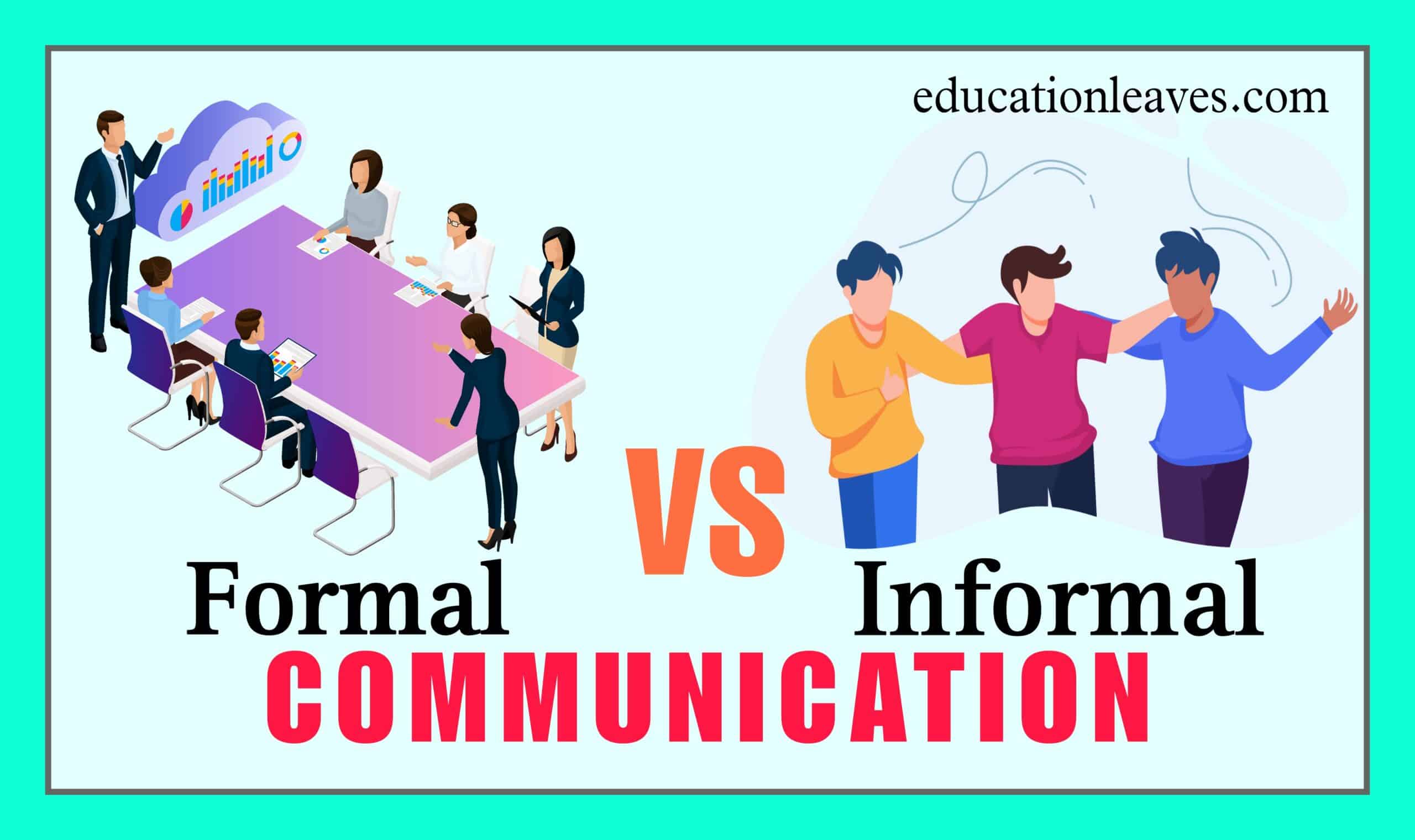Before we jump into the topic “Formal vs Informal Communication”, first, we should learn about what formal and informal communication are.
What you are going to learn?
Formal Communication:
Formal communication refers to the exchange of information, messages, or ideas within an organization or professional setting using established rules, protocols, and designated channels. It typically follows a structured format and is characterized by a professional tone, adherence to specific language conventions, and a predefined hierarchy.
In formal communication, there are predefined roles and responsibilities, and the flow of information usually follows the established chain of command or organizational structure. It is often used for official announcements, reports, memos, presentations, emails, and other types of written or verbal communication.
The Key Features of Formal Communication are :
- Structured format: Formal communication is typically organized and follows a specific format, ensuring clarity and consistency in the message delivery.
- Professional tone: Communication in formal settings maintains a professional and respectful tone. It avoids colloquial language, slang, or informal expressions.
- Designated channels: There are established channels and mediums through which formal communication occurs, such as official meetings, reports, company newsletters, or specific software platforms.
- Official documentation: Formal communication often involves written documentation for future reference, ensuring accountability and providing a record of important decisions or discussions.
- Hierarchy and protocol: Formal communication often adheres to the organizational hierarchy and follows established protocols, ensuring that messages are transmitted through appropriate channels and reach the intended recipients.
Formal communication is essential for maintaining order, clarity, and professionalism in business, government, educational institutions, and other structured environments. It helps convey information accurately, facilitates decision-making, establishes accountability, and ensures effective coordination among individuals and departments.
Informal Communication
Informal communication refers to the casual and unofficial exchange of information, ideas, or messages within an organization or social setting. It is characterized by a relaxed tone, spontaneous interactions, and a less structured format compared to formal communication.
In informal communication, individuals communicate in a more personal and casual manner, often outside the official channels and hierarchies. It can occur through face-to-face conversations, social gatherings, phone calls, instant messaging platforms, or social media. Informal communication is primarily driven by social interactions and relationships, rather than official responsibilities.
Key Features of Informal Communication are:
- Casual Tone: Informal communication allows for a more relaxed and conversational tone. It may involve the use of informal language, humor, and slang that are more commonly used in everyday conversations.
- Spontaneous Interactions: Informal communication often occurs spontaneously and outside of scheduled or planned interactions. It can happen during breaks, lunchtime, or impromptu discussions.
- Flexibility and Non-Structured Format: Unlike formal communication, informal communication does not follow a strict structure or predefined format. It is more flexible and adaptable to the preferences and needs of the individuals involved.
- Informal Channels: Informal communication can take place through various channels, including face-to-face conversations, phone calls, text messages, emails, social media platforms, or online messaging apps.
- Quick Dissemination of Information: Informal communication allows for the rapid sharing of information among individuals. It is often used to exchange updates, opinions, or informal feedback on work-related or social matters.
Informal communication serves several purposes within organizations. It helps build relationships, fosters camaraderie among colleagues, facilitates social bonding, and promotes a sense of community. Informal communication can also contribute to innovation, as it encourages the free flow of ideas and promotes a more relaxed and open environment for discussion. However, it is important to note that in certain professional contexts, informal communication should be used judiciously to maintain boundaries and respect for formal channels of communication.
Differences Between Formal and informal Communication
| Aspect | Formal Communication | Informal Communication |
|---|---|---|
| Structure and Format | Follows a structured format with specific guidelines | Less structured format, flexible and adaptable |
| Purpose | Official and professional communication | Casual, social, and personal communication |
| Channels | Official channels (meetings, emails, memos) | Varied channels (face-to-face, phone, social media) |
| Documentation | Written documentation (reports, minutes, contracts) | Limited documentation, informal nature |
| Tone and Language | Professional tone, formal language | Casual tone, informal language |
| Hierarchy | Adheres to organizational hierarchy and protocols | Less focused on hierarchy, more egalitarian |
| Communication Flow | Directed and controlled by organizational structure | Spontaneous, fluid, and unrestricted |
| Use of Humor | Limited, depending on the formality of the context | Frequent use of humor, jokes, and personal anecdotes |
| Engagement | Emphasizes clarity and professionalism | Fosters social bonding and relationship building |
| Speed | Can take time for approvals and decision-making | Quick and immediate information exchange |
| Record-Keeping | Important decisions and records are documented | Limited documentation, often relies on memory |
Conclusion
In conclusion, formal and informal communication are two distinct approaches to exchanging information within organizations or social settings. Formal communication follows a structured format, uses a professional tone, and adheres to specific guidelines and protocols. It is primarily used for official purposes, such as conveying important information, submitting reports, or discussing work-related matters. Formal communication often occurs through official channels, maintains documentation, and emphasizes clarity, professionalism, and adherence to organizational hierarchies.
On the other hand, informal communication is more casual, spontaneous, and flexible. It occurs in informal settings, promotes social bonding, and allows for a relaxed tone, informal language, and personal expressions. Informal communication facilitates quick information exchange, fosters relationship building among colleagues, and can occur through various channels, both offline and online.
Both formal and informal communication have their own advantages and purposes. Formal communication ensures clarity, accountability, and professionalism in official contexts, while informal communication promotes social connections, creativity, and a positive work environment. Striking a balance between the two is crucial for effective communication, as it enables efficient information flow, encourages collaboration, and nurtures a supportive organizational culture.


1 thought on “Formal Vs Informal Communication: A detailed comparison”